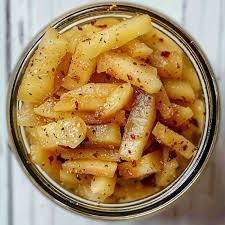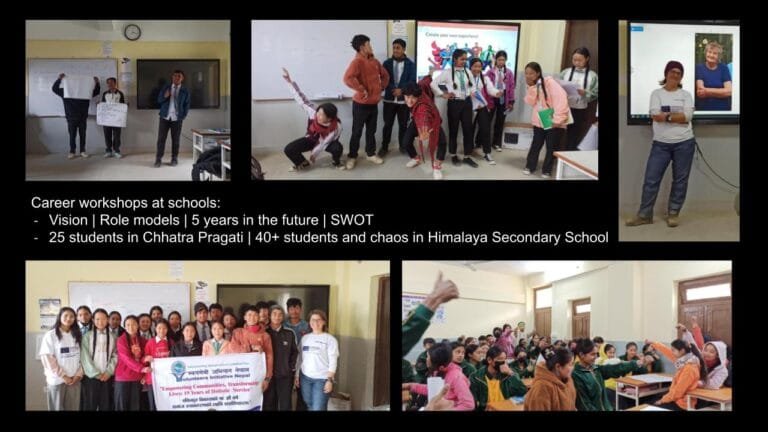Written by: Chandrika KC, ESC Intern, VIN
Nepal is a landlocked country that is situated between India and China. Nepal is also known as the country with unity in diversity, as it has diversity in both Geographical regions and Ethnic groups. India and China surround this country. Therefore, some of the traditions and cultures in those areas are influenced. Most Nepalese follow the Hindu religion, while others follow Christianity, Buddhism, and Hinduism. The diversity in Ethnic groups has resulted in the Nepalese having different cultures and traditions. People of Nepal speak different languages according to their ethnic groups, so Nepal is also known as a multilingual country.
Why Nepalese Cuisine Stands Out
The National Dish: Daal Bhaat and More
Nepalese cuisine is a must-try cuisine in the world. Not only does Nepal have diversity in ethnic groups, geographical regions, and languages, but it also has diversity in food. The national food of Nepal is Gundruk and Dindo. They eat rice, lentils, and vegetable curry two times a day. They call rice a “Bhaat” and lentils a “Daal” in Nepali. “Daal Bhaat power twenty-four hours” is the slogan made for Nepal. The only difference in daily lunch and dinner is the change in vegetable curry. Nepalese prefer rice because it makes their stomachs full and gives them the energy to work for long hours. They have a thaali set called Thakali Khana set where you get rice, lentils, vegetables, Gundruk soup, non-veg items, pickles, ghee, etc. You can get both veg and non-veg sets.


Dhindo: A Traditional Energy Food

Dhindo can be made from maize, millet, and Buckwheat flour. It is made by mixing water and flour in a ratio of three to one. The flour is added to the boiling water and stirred vigorously until the mixture is soft and smooth. Dhindo is usually served with ghee, Gundruk soup, spinach gravy, non-veg gravy or soup, etc. A small portion of dhindo is taken, then it is made round with the help of fingers, dipped into the soup, and eaten.
Everyday Foods with International Influence
And people there also like to eat roti, vegetables, and thupka. This is influenced by India and China, respectively. Likewise, pickles are very famous there. It can be an instant pickle or a ready-made jar pickle. They are spicy and sour. It gives a flavor to the tongue when eaten with the food. Instant pickle examples are tomato pickle, mint, coriander, potato, and gundruk pickle. Meanwhile, jarred, ready-made pickles are chilly, and so are radish and mango pickles.



🤝 Join Our Community! Your skills and passion can make an impact.
Ethnic Foods Based on Community Traditions
People have different types of food according to the culture, like N,ewar, or any other Mongolian group, which includes non-vegetable items like choila, chiura, bara, Yamari, etc. They drink local pure alcohol made from rice, millet, etc., during the celebration. It is compulsory for each member who attended the ceremony to taste the alcohol. It is more like a mandatory ritual. Similarly, in the Aryan group, some traditional foods like sel roti, puri, and kheer are made specially on occasions.
Modern Favorites: Momo, Chowmein & Instant Noodles
Now, to talk about the trend of food in Nepal for many years, Momo, Chowmin, chauchau (noodles), etc., have been eaten as snacks. The food that sticks in your mind when you are hungry is always Momo for Nepalese. To know how Momo is made, the keema of meat is first wrapped in the circular sheet made from wheat flour and let it marinate for 7 minutes, for the soup, tomato, onion, and spices are half-cooked and ground in a grinder. However, international food like pizza, burgers, and sandwiches has been famous and loved by Nepalese people for many years.


If you go to different places in Nepal, every place serves authentic thaali sets, which include many food items. You can get Nepalese cuisine very easily in Nepal. Likewise, Momo, chowmin, etc., are also found everywhere. According to social media, most of the reviews of Nepalese food are very positive. Therefore, you must try Nepalese cuisine once in your life to learn its taste and flavor.
The Global Appeal of Nepalese Food
Exploring other countries and their cultural food is an excellent idea to develop a good feeling and respect for the respective countries. This will increase interest in the respective countries. Many YouTube vloggers go to different countries to explore the authentic tastes that are popular only in that particular country and give a review of the food. This indirectly helps in promoting food and nationality. So, cuisine can indirectly encourage the country’s tourism industry, which may help to improve the country’s economy.
🏡 Visit Us! Stop by NTCLC and see what we’re all about.





